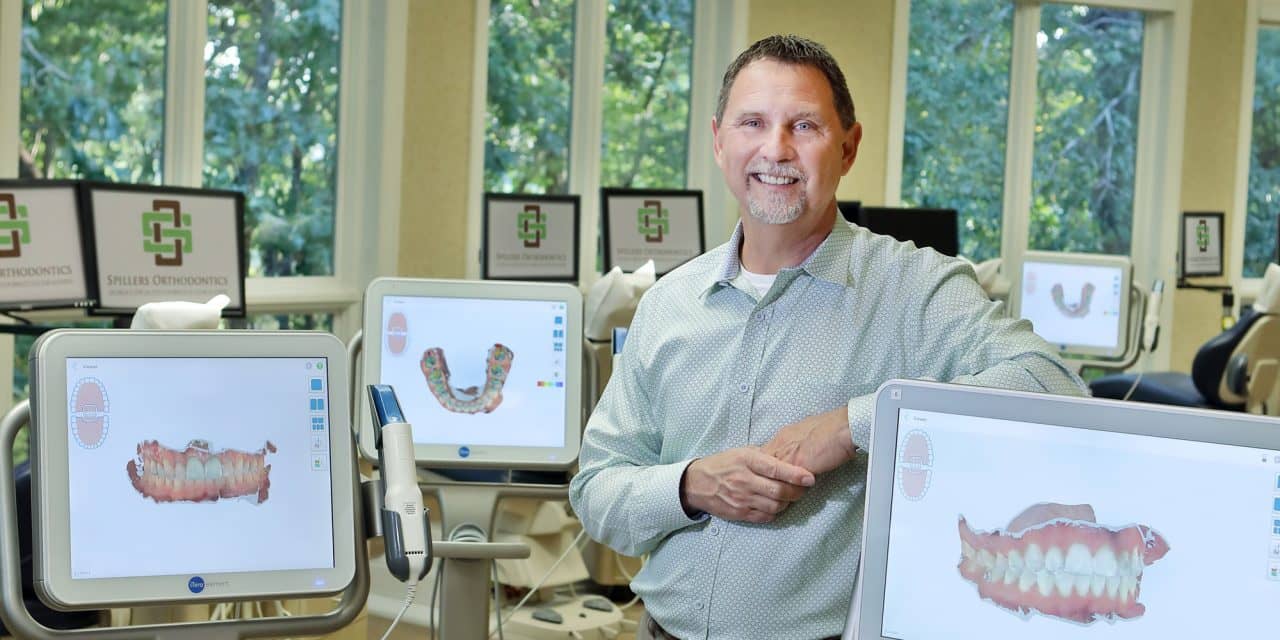By Alison Werner | Photography by Leah Yetter
Take a moment and ask yourself, does the practice you have today look like the practice you had just a decade ago? Are your exams the same? Is the way you move teeth the same?
For J. Don Spillers, Jr, DMD, MS, an orthodontist in private practice in Georgia, the answer is most definitely no.
Fresh out of his residency at the University of Missouri-Kansas City in 1993, Spillers looked for a practice to buy—at the top of his wish list was a practice with the latest technology: an X-ray machine. When he designed his latest office some 20 years later, a bank of intraoral scanners was at the top of his list.
In the course of his 26-year career, Spillers has steadily moved his practice forward, shedding old treatment methods and technologies as newer, more efficient, and more effective modalities enter the field. Today, his two-office practice is a prime example of the orthodontic practice of the future: One fully embracing clear aligner treatment and a digital workflow anchored by the latest in intraoral scanning technology.
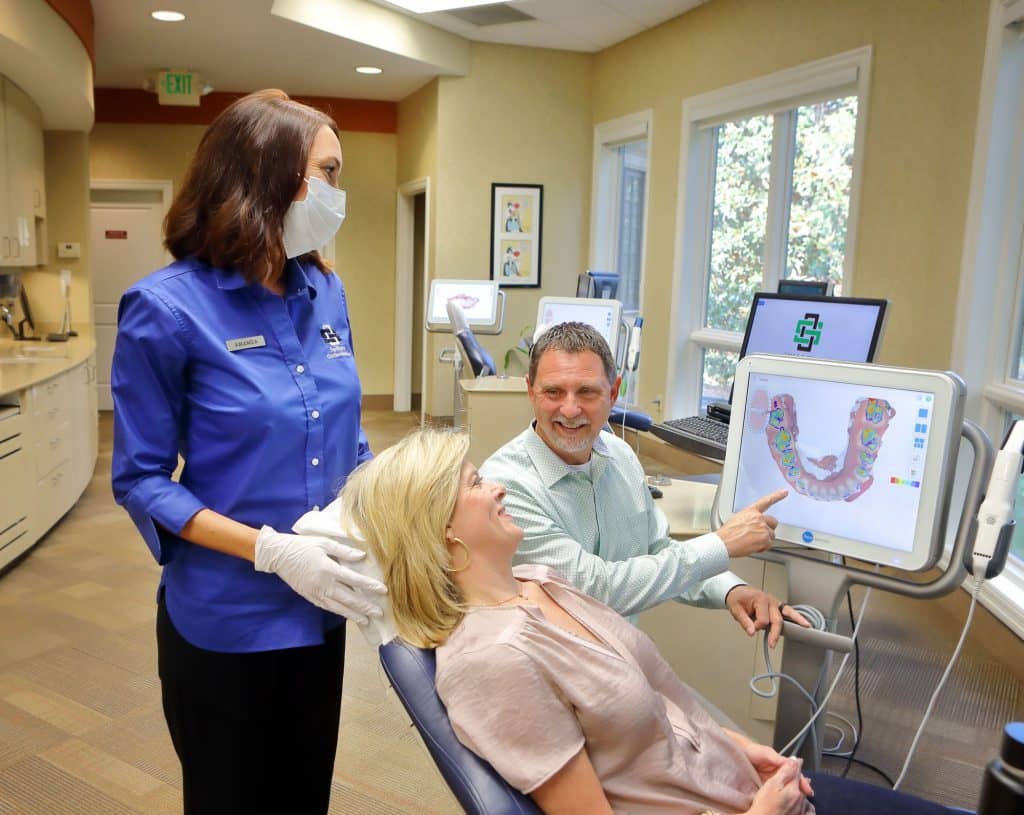
Located in central Georgia, Spillers Orthodontics offers its patients two locations, one in Warner Robins and one in Macon. With the Warner Robins location, Spillers has created a unique office model. The practice is housed in a medical office park, sitting on 14 acres. Spillers bought the land 16 years ago after outgrowing his original office. He planned to move the office to a larger facility on the edge of the growing town, but when he found the right piece of land, the seller informed him it was all 14 acres or nothing. Though the acreage was more than he needed, he saw an opportunity. He approached some local dental colleagues to gauge their interest in relocating to an office park dedicated to dental specialties if Spillers built it. They were in. Today, the office park includes Spillers’ orthodontic practice, as well as an oral surgeon, pediatric dentist, and endodontist. In addition, the facility has a family medical doctor and will add an eye specialist.
“I think it’s a great service to our patients because they know if one of us needs to refer someone over, they’re right here,” says Spillers, adding, “It definitely helps every practice here because they come see me, they see the pediatric dentist; and as people come see the pediatric dentist, they see us.”
Meanwhile, an old personal connection led to the addition of the Macon office. About 6 years ago, Spillers learned the orthodontist who treated him as a child—the one who inspired him to pursue a career in orthodontics—had passed away and his office was in limbo. No one was interested in buying it or taking it over. Spillers decided to purchase the practice and stay in the same 600-square-foot office for awhile, giving the community time to adjust to the change in ownership. A year ago, he moved the Macon office to a new 4,000-square-foot facility, again one he built, and again on the edge of the town to take advantage of growth.
The offices are run off one database, with staff answering the phone and scheduling appointments for either location. Once in either location for their visit, patients encounter identical technology—with a CBCT and intraoral scanners in both locations.
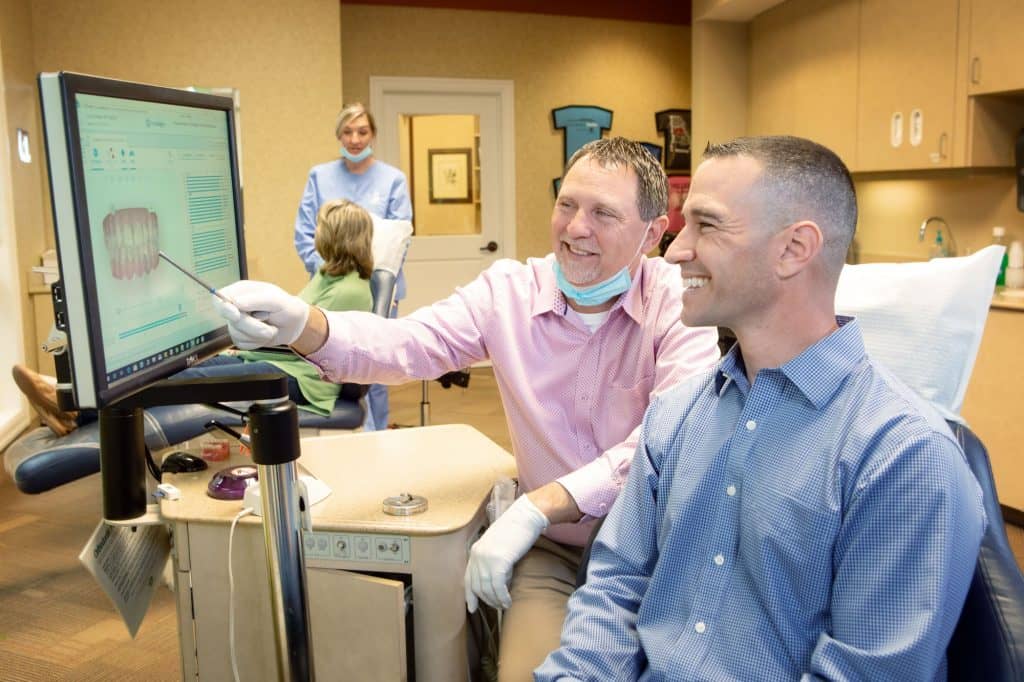
Short Career Long on Change
When Spillers thinks about the evolution of technology in orthodontics, he stops to reflect on how quickly orthodontic treatment has evolved in the course of his career. “In my short career—26 years seems long, but it’s really not—we were banding pre-molars, first molars, and second molars when I started. Then we went to no bands on the pre-molars and just first and second molars. Then we went to pre-pasted brackets and bonding everything, and no bands unless we were doing an appliance. And now we’re doing aligners. Our practice is over 80% Invisalign and we don’t fit bands in the mouth—we fit them on a 3D printed model before the patient gets here and the appliance is already done.
“It’s been really neat to experience the change; and now I feel like we’re really in an orthodontic revolution with technology. I think the whole industry will look up and it will be like the telephone—we all used to have a telephone that hung on a wall in our house and nobody has that now. We all have cellphones that are computers. We are going to be scanning people, treating with clear aligners and no metal.”
Second Time Round with Invisalign
Spillers was initially certified for Invisalign in 2000—but, unhappy with how it worked clinically, he quit using it soon after. It wasn’t until 2011 that he revisited Invisalign treatment after attending an Invisalign Summit and seeing how other orthodontists were successfully treating surgical and complex Class II cases. Moreover, he saw that the cases were finishing beautifully. “A lot of people say you can’t finish the cases, but we found the opposite really. We can move teeth two-tenths of a millimeter [with Invisalign]—you can hardly do that with a wire. It’s tough when you try.”
In addition, Spillers keyed into the improved hygiene and ease of treatment for the patient. “I remember we had a big staff meeting and talked about it. I said, ‘Hey guys, I may be forecasting wrong, but I really believe this is the vision we need to have for the future. And I see a day where we will have no braces and wires and we’ll be using clear aligners.”
The practice immediately set course to work in that direction, and a key facet of this strategy was incorporating an intraoral scanner into the clinical workflow.
Spillers Orthodontics purchased its first iTero intraoral scanner in 2012 and the impact was monumental. “We thought we’d landed on the moon. It was unbelievable,” he recalls. “It took 18 minutes to scan, but it was still better than doing polyvinyl impressions.”
While 18 minutes might sound laborious and financially inefficient, Spillers focused on the impact the scanning technology had on the patient experience. “The patients talked about how much easier it was and how they loved not having goopy stuff in their mouth,” he recalls.
Today the practice has six iTero Element or Element 2 intraoral scanners from Align Technology, and averages about 2 minutes per scan.
From a treatment planning perspective, Spillers appreciates that the iTero’s tools allow him to better plan from the outset, especially for surgical cases, and more easily share treatment data with colleagues. From a patient communication perspective, the Invisalign Outcome Simulator has been a key tool not only in terms of patient acceptance but also the time it takes to get a patient on board.
“We all do better with pictures. Instead of me spending 25 minutes in an exam trying to explain to the patient what we’re going to do and how it’s going to look, I can now do that in 3 minutes with the Invisalign Outcome Simulator on the iTero scanner. I can show them exactly what’s going to happen, and usually at that point, there are no questions. They already understand. Anytime a patient sees what their teeth will look like, I think it helps them make a decision on what they would like to do,” says Spillers, who is quick to point out that this tool also allows the patient to see it’s the orthodontist, not the computer, calling the shots with treatment.
“With the push of a button, you can show them how it’s going to look, but it’s not always perfect—and that’s where we explain to them, ‘It’s not perfect because it’s the computer doing it; and that’s why we don’t let computers treat you. That’s why we treat you.’ It’s an opportunity to educate the patient on the fact that Invisalign clear aligners aren’t treating them, the doctor is.”
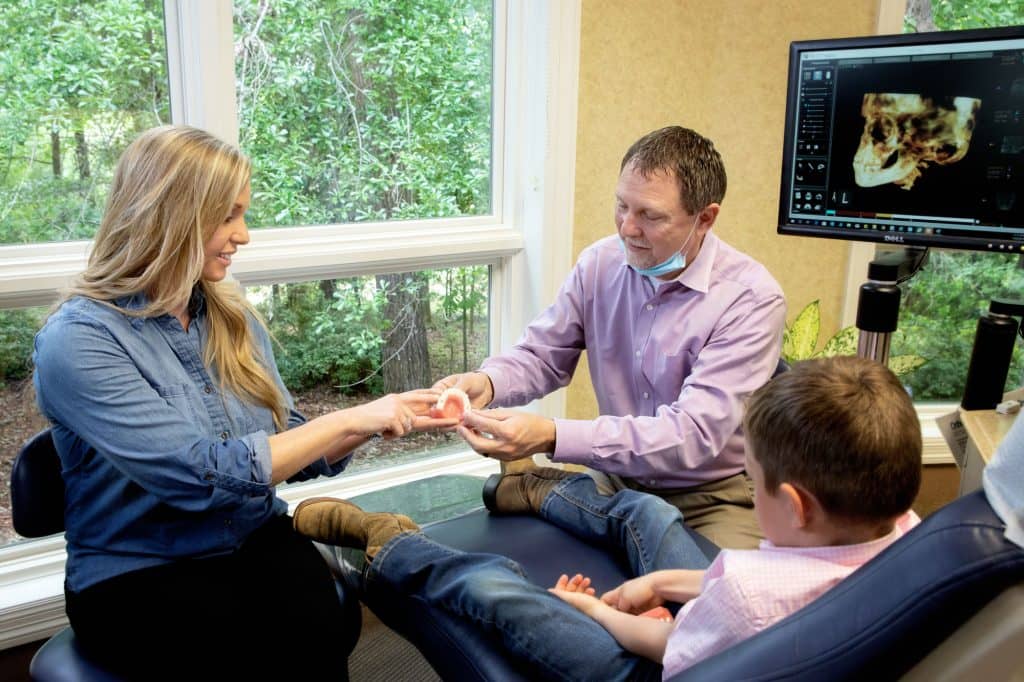
How an Intraoral Scanner Changes a Practice
The impact of Invisalign clear aligners and an intraoral scanner like iTero on practice efficiency, especially with regard to scheduling, is well established. Spillers recalls how it took four appointments to get a patient’s treatment started when he first began practicing. Today, it’s down to two visits for aligner patients—the first an initial exam and the second placing the appliances; and one visit for those 20% of patients who still opt for brackets and wires.
That patient experience, whether it’s no longer having to suffer through impressions or not having to come in for multiple visits to start treatment, is at the core of Spillers Orthodontics’ decisions with regard to technology integration.
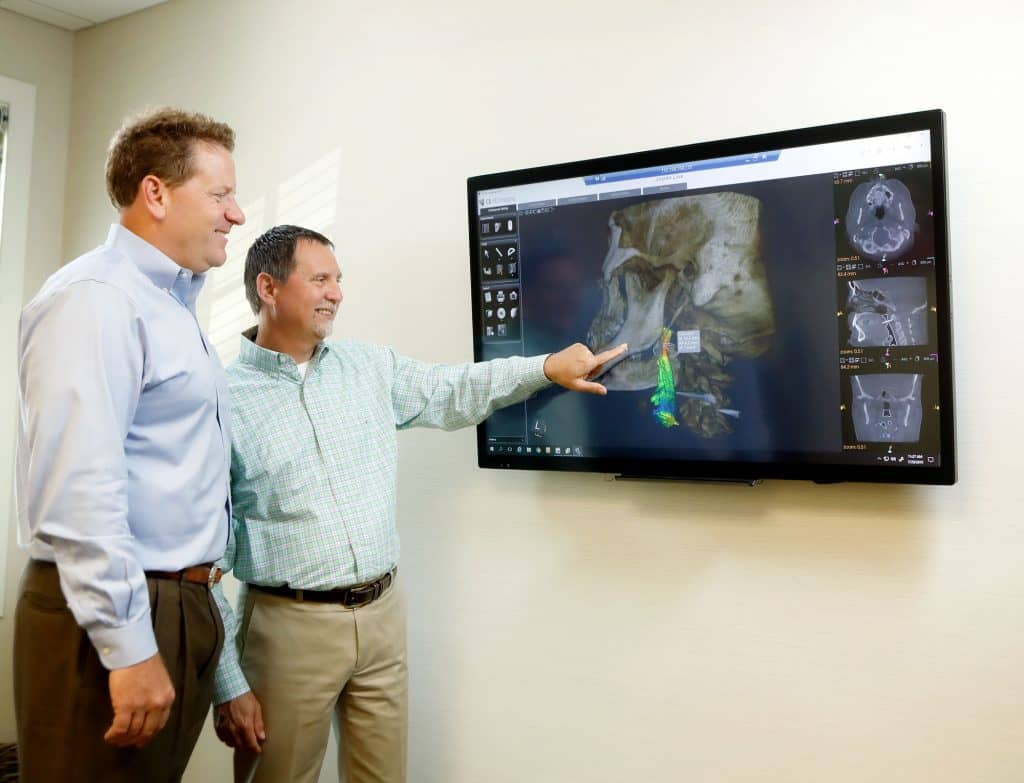
“It’s not about us as the orthodontist,” says Spillers, who practices with his partner Adam S. Gordon, DMD, an orthodontist who joined the practice 4 years ago. “It’s about the patient—and what the patient or parent wants is to not have to take off of work three times or get the kid out of school three times. They’re here; they’re ready to get going—let’s design a system that can make that happen.”
Moreover, the availability of intraoral scanning technology and aligners means the practice is better able to treat children with special needs. “Those kids are not going to do an impression. They are not going to wear braces; they can’t. So, from that standpoint, [Invisalign clear aligners and iTero scanners] have changed that part of our practice dramatically,” says Spillers.
Incorporating iTero scanners and leaning heavily on Invisalign treatment naturally also changed the practice’s inventory. Intraoral scans mean the elimination of alginate and stone from the practice entirely, and discussion about throwing out all the impression trays. And with less bracket and wire cases, sterilization requirements are significantly reduced. The practice, which used to run three sterilizers daily all day, now runs one sterilizer a week at partial capacity, mainly sterilizing mirrors. As a result, when the practice’s sterilization technician left to go back to school, the practice didn’t fill the vacancy.
But realizing these kinds of efficiencies takes time, and that can be frustrating, says Spillers. “I always say for me, the hardest thing was when our practice was at about 25% to 30% aligners and 70% braces, because now you’re running two workflow systems in the practice, and it’s very hard to do that. And so, I think orthodontists get frustrated with that and tend to go back to what they were doing, sticking with braces and saying, ‘This is what we’ve always done and it’s easier and faster.’”
It wasn’t until 2016 that Spillers Orthodontics first passed the 50% mark on Invisalign cases; and another 3 years to hit the 80% mark. Key to building this momentum was, one, finishing enough patients in Invisalign clear aligners and having them out there talking to others about their experience, and, two, deciding not to upcharge for Invisalign treatment. “If aligners are the same cost, and aligners have all these positive benefits—and they do—the patient’s going to choose aligners every time,” he says.
Spillers expects the practice to hit the 90% Invisalign case mark in the next year, conceding that 90% to 95% may be where he tops out. “I think there may be some people who just want to wear braces. And that’s ok. We treat those people just like we do aligner patients.” And as he thinks about technology requirements to sustain that ratio, he expects his practice will need one intraoral scanner for every two chairs. Currently, there are 10 chairs in Macon and 12 in Warner Robins, with six intraoral scanners in use and another two on the way.
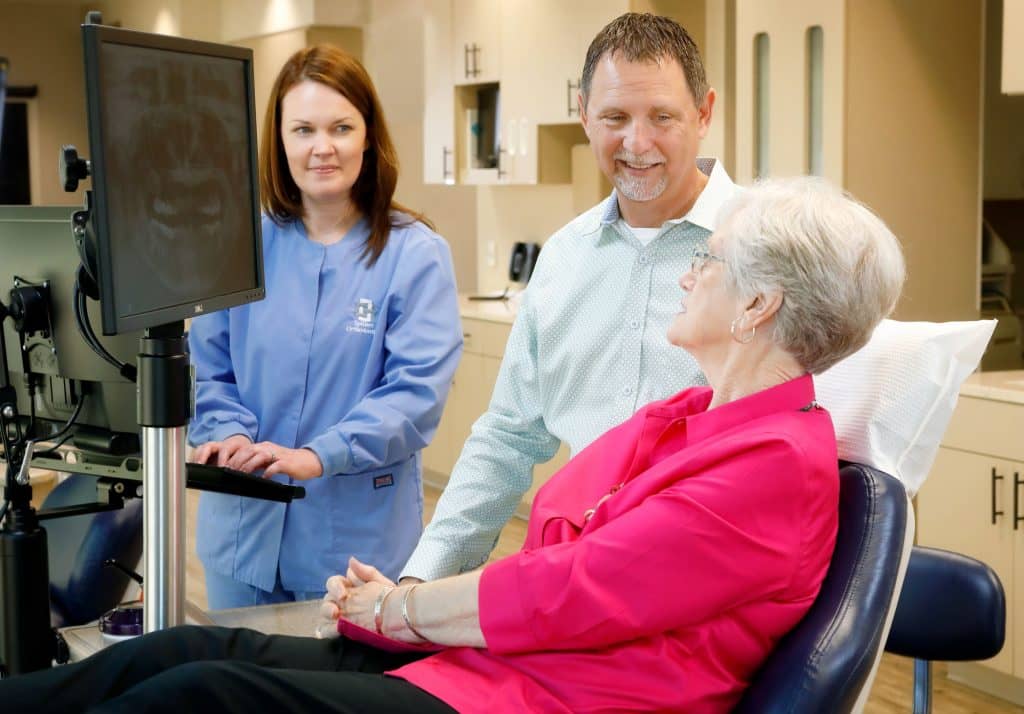
Next Steps
The practice’s integration of intraoral scanning technology naturally led to the purchase of two 3D printers—one EnvisionTEC, and one Juell—and further evolution of the practice’s digital workflow. Today a patient treated with braces is scanned immediately after debond and a 3D model then printed in-house; a retainer is produced the same day. With that data on file, the practice can easily fabricate a replacement retainer without a visit for an impression. In addition, 3 years ago, Spillers Orthodontics started using their 3D printers to print in-house aligners for the treatment of some minor cases—those requiring less than 10 aligners. For those requiring more aligners, the practice continues to treat with Invisalign clear aligners.
As Spillers sees it, producing in-house aligners allows the practice to compete with the direct-to-consumer (DTC) aligner companies flooding the market. With its own in-house lab and dedicated full-time lab tech, Spillers Orthodontics avoids the lab fees that would otherwise drive up costs for the patient requiring minor treatment, allowing the practice to compete with DTC aligner companies that benefit from the margins of having their own labs. Consumers can then weigh the cost of orthodontic treatment from a DTC company or an orthodontist, and opt for the orthodontist who can provide more thorough care.
“For us, it’s about customer service. The patient is getting good care when they’re able to see a doctor and be checked before any tooth movement is started—and when we are able to be competitive on price,” says Spillers, adding that his doctor-made aligners are now branded “SO Clear Aligners” for Spillers Orthodontics, with catchy phrases printed on the aligner packaging playing off the “SO” initials— “SO Fast, SO Affordable, SO Beautiful, SO You!”
The opportunity to attract these patients also means Spillers is able to better educate them on orthodontic treatment and the orthodontist’s role. “If they get in here, we’re able to use the iTero scanner to scan them and show them their bite. We show them we need to do more than fix their front four teeth. If you don’t offer at the price point the patient thinks they’re looking for, how are you going to get the opportunity to educate them? I think it’s a mistake to just say, ‘Well, let them go somewhere else.’”
The next phase of the practice’s digital workflow is the introduction of Dental Monitoring to help reduce the number of observation appointments for their aligner patients. The remote dental monitoring app not only cuts down on the number of appointments for local patients who live more than 30 to 40 minutes away, but it also allows the practice to continue to treat patients away at college or working/living overseas part of the year. “Digital technology has really enabled that. It’s really made it easier on the patient because there’s nothing for them to have to worry about if they’re going to be away for 6 months. With Dental Monitoring, we’re checking on them every week; we’re actually seeing their teeth more than we would if we were seeing them every 12 weeks which is our normal schedule.”
Spillers admits he struggled with the technology in the beginning. He was stuck on the idea that as the doctor, the patient wants to see him. “But if you go back and ask the question: Do they really want to see us? They want our experience. They want our input into their case. They want us to make sure they have a nice result. They want us involved. But does that mean they want to see us every 4 weeks or every 3 to 4 months? At the end of the day, it doesn’t really matter what I want. It matters what the patient wants.”
And that has been the through-line at Spillers Orthodontics—no more so than in the last decade as the practice has leaned heavily into the technology shaping the field. The patient experience comes first and how the patient benefits from the technology—whether an intraoral scanner, in-house 3D printing capabilities, or a remote monitoring app—is what matters most to the practice’s success. OP
Alison Werner is chief editor of Orthodontic Products.

